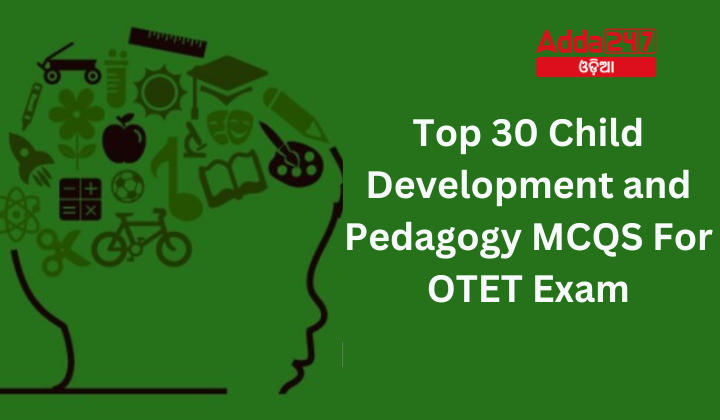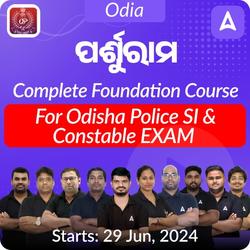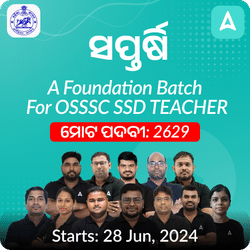The Odisha Teacher Eligibility Test (OTET) assesses the eligibility of candidates to teach in schools of Odisha. A crucial section of this exam is Child Development and Pedagogy, which evaluates understanding of child development and the principles of pedagogy. Below are 30 multiple-choice questions (MCQs) designed to help candidates prepare for this section.
Top 30 Child Development and Pedagogy MCQS For OTET Exam
- Which of the following statements best describes the concept of “multidirectional development”?
a) Development occurs only in one direction, from birth to adulthood.
b) Development involves only gains in physical and cognitive abilities.
c) Development includes both gains and losses in different areas.
d) Development is influenced solely by genetic factors.
Answer: c) Development includes both gains and losses in different areas.
Explanation: Multidirectional development means that individuals can experience gains in some areas while experiencing losses in others throughout their lifespan. - The three general domains of development are:
a) Physical, cognitive, and environmental.
b) Cognitive, social-emotional, and environmental.
c) Physical, cognitive, and social-emotional.
d) Physical, genetic, and cognitive.
Answer: c) Physical, cognitive, and social-emotional.
Explanation: Development occurs across three primary domains: physical (body changes), cognitive (mental abilities), and social-emotional (emotions and relationships). - Which of the following best describes “plasticity” in human development?
a) Development is rigid and cannot be influenced by external factors.
b) Development can change and adapt in response to experiences.
c) Development only occurs in early childhood.
d) Development is solely determined by genetic factors.
Answer: b) Development can change and adapt in response to experiences.
Explanation: Plasticity refers to the malleability of development, indicating that individuals can change and adapt based on their experiences. - Prenatal development encompasses which of the following stages?
a) Conception through toddlerhood.
b) Conception through birth.
c) Birth through infancy.
d) Infancy through early childhood.
Answer: b) Conception through birth.
Explanation: Prenatal development begins at conception and continues until birth, covering all major body structure formations. - During which period of development do children typically begin formal schooling?
a) Infancy and Toddlerhood.
b) Early Childhood.
c) Middle Childhood.
d) Adolescence.
Answer: c) Middle Childhood.
Explanation: Middle childhood, spanning ages 6 to 11, is typically when children begin and engage in formal schooling. - What significant cognitive changes occur during adolescence?
a) Improved motor skills.
b) Understanding abstract concepts.
c) Basic language acquisition.
d) Development of gross motor skills.
Answer: b) Understanding abstract concepts.
Explanation: Adolescents begin to think about abstract concepts like love, fear, and freedom, reflecting significant cognitive development. - Which domain of development includes changes in intelligence and problem-solving abilities?
a) Physical.
b) Cognitive.
c) Social-emotional.
d) Genetic.
Answer: b) Cognitive.
Explanation: The cognitive domain involves changes in mental abilities such as intelligence, problem-solving, and memory. - How do early experiences influence later development?
a) Early experiences have no impact on later development.
b) Early experiences determine all aspects of later development.
c) Early experiences shape but do not completely determine later development.
d) Early experiences only affect physical development.
Answer: c) Early experiences shape but do not completely determine later development.
Explanation: Early experiences are crucial in shaping development, but later experiences and plasticity also play significant roles. - Which stage of development is characterized by the most dramatic growth and change?
a) Prenatal Development.
b) Infancy and Toddlerhood.
c) Early Childhood.
d) Middle Childhood.
Answer: b) Infancy and Toddlerhood.
Explanation: Infancy and toddlerhood are marked by rapid growth and significant changes in physical, cognitive, and social-emotional domains. - During which developmental period do children typically refine their motor skills and learn about social relationships beyond the family?
a) Prenatal Development.
b) Infancy and Toddlerhood.
c) Early Childhood.
d) Middle Childhood.
Answer: d) Middle Childhood.
Explanation: Middle childhood (ages 6 to 11) is when children refine motor skills and begin to form social relationships outside the family context. - Which of the following phases involves the teacher hypothesizing about the possible outcomes of their actions?
a) Inter-Active Stage
b) Post-Active Stage
c) Pre-Active Stage
d) None of the above
Answer: c) Pre-Active Stage - What is the primary focus of the Inter-Active Stage?
a) Hypothesizing outcomes
b) Classroom teaching and interaction
c) Evaluation and feedback
d) Deciding about instructional strategies
Answer: b) Classroom teaching and interaction - In which phase does the teacher decide on the content to be taught?
a) Pre-Active Stage
b) Inter-Active Stage
c) Post-Active Stage
d) None of the above
Answer: a) Pre-Active Stage - The operation of forming or fixing up goals is a part of which teaching phase?
a) Inter-Active Stage
b) Pre-Active Stage
c) Post-Active Stage
d) None of the above
Answer: b) Pre-Active Stage - During the Inter-Active Stage, the teacher’s task of keeping pupils involved may entail which of the following activities?
a) Hypothesizing and planning
b) Explanation, demonstration, and logical operations
c) Evaluating and reteaching
d) Developing teaching strategies
Answer: b) Explanation, demonstration, and logical operations - Which phase of teaching includes the assessment of students’ achievements and deciding whether to proceed with new content?
a) Pre-Active Stage
b) Inter-Active Stage
c) Post-Active Stage
d) None of the above
Answer: c) Post-Active Stage - What operation is involved in the Post-Active Stage concerning the evaluation of instructional material and aids?
a) Forming goals
b) Managing presentation
c) Assessing suitability
d) Action or achievement
Answer: c) Assessing suitability - At which stage does the teacher analyze the extent to which students have grasped the presented material?
a) Pre-Active Stage
b) Inter-Active Stage
c) Post-Active Stage
d) None of the above
Answer: c) Post-Active Stage - Deciding about appropriate strategies and tactics of teaching is part of which phase?
a) Pre-Active Stage
b) Inter-Active Stage
c) Post-Active Stage
d) None of the above
Answer: a) Pre-Active Stage - Which phase is characterized by the teacher using various strategies to achieve already set goals?
a) Pre-Active Stage
b) Inter-Active Stage
c) Post-Active Stage
d) None of the above
Answer: b) Inter-Active Stage - What is the official name of the Kothari Commission?
a) National Education Commission
b) Education for National Development
c) Indian Educational Reforms Commission
d) Committee on Educational Improvement
Answer: b) Education for National Development - Who was the chairman of the Kothari Commission?
a) Dr. Hansa Mehta
b) Smt. Durga Bai Deshmukh
c) Dr. D.S. Kothari
d) Bhaktavatsalam
Answer: c) Dr. D.S. Kothari - When was the Kothari Commission established?
a) January 1, 1964
b) July 14, 1964
c) December 31, 1965
d) June 29, 1966
Answer: b) July 14, 1964 - How many members were there in the Kothari Commission?
a) 10
b) 15
c) 17
d) 20 Answer: c) 17 - The Kothari Commission submitted its report on:
a) January 1, 1966
b) June 29, 1966
c) December 31, 1966
d) July 14, 1965
Answer: b) June 29, 1966 - What was the primary objective of the Kothari Commission?
a) To establish new schools
b) To promote higher education
c) To examine all aspects of the educational sector in India
d) To create a new curriculum
Answer: c) To examine all aspects of the educational sector in India - According to the Kothari Commission, by what year was the target to achieve 100% girls’ enrollment in the age group 6-11 years?
a) 1970
b) 1976
c) 1981
d) 1985
Answer: b) 1976 - Which committee’s recommendations were included in the Kothari Commission’s report for women’s education?
a) Hansa Mehta Committee
b) Durga Bai Deshmukh Committee
c) Bhaktavatsalam Committee
d) All of the above
Answer: d) All of the above - What kind of special facilities did the Kothari Commission recommend for girl students in backward areas?
a) Free residential accommodation
b) Free transport arrangements
c) Special allowance to women teachers
d) All of the above
Answer: d) All of the above - What did the Kothari Commission suggest for the education of girls at the secondary stage?
a) Establishing separate schools for girls
b) Providing hostels and scholarships
c) Offering vocational courses
d) All of the above
Answer: d) All of the above










